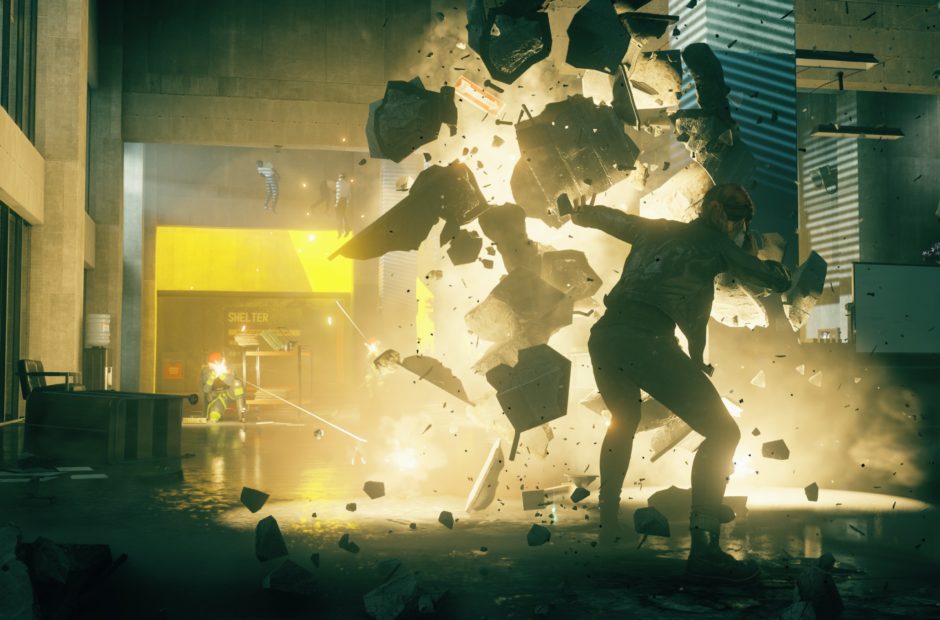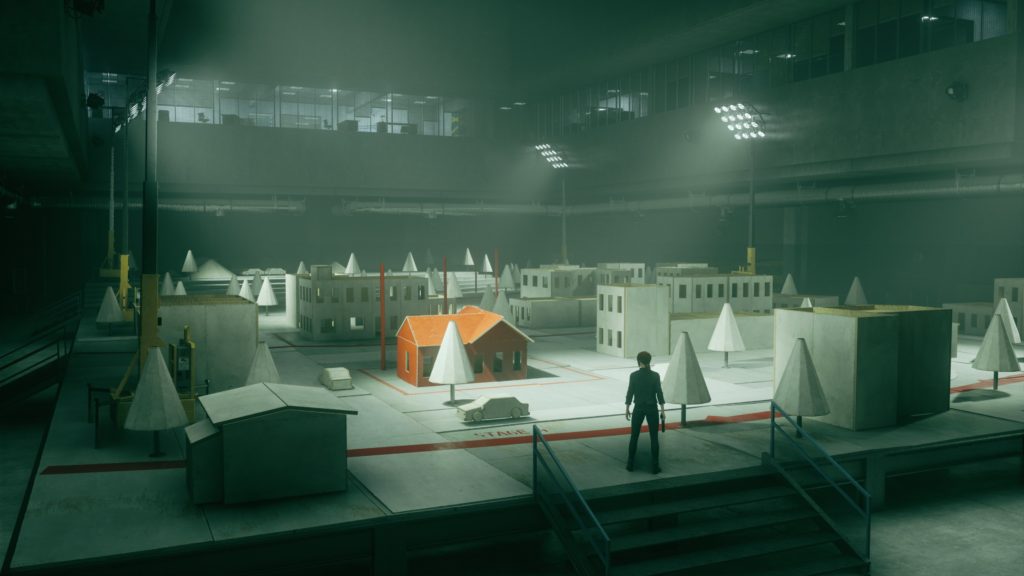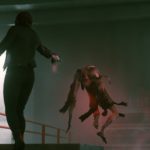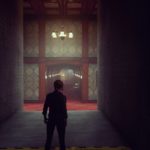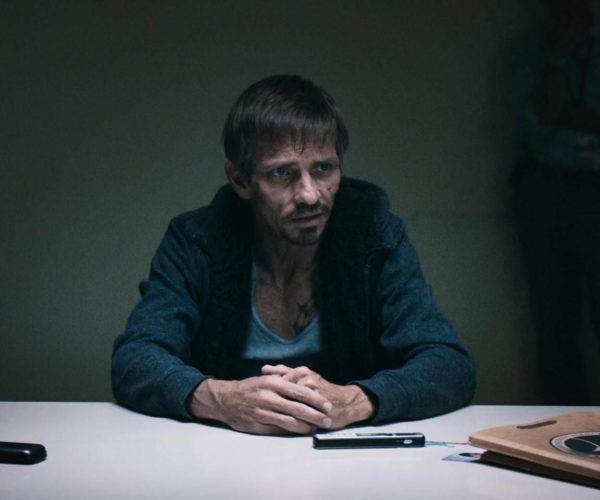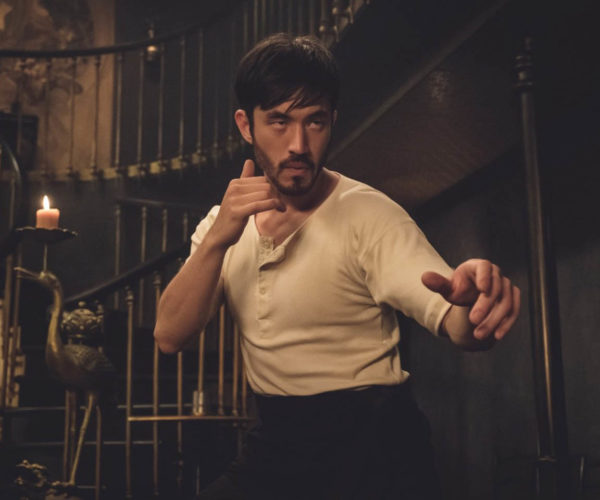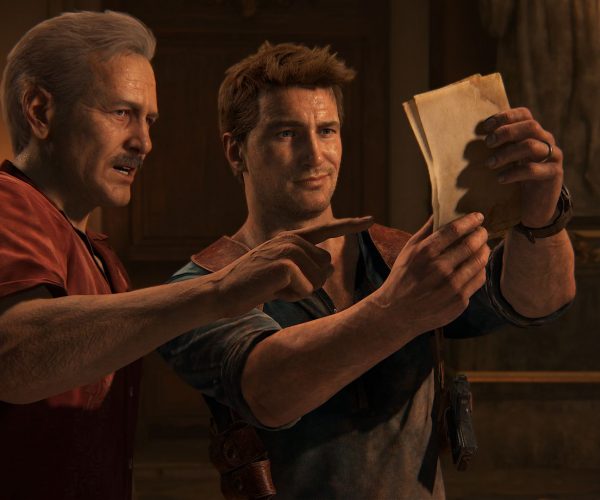When a Remedy game comes along, I know basically what I’m going to get. After Max Payne, Alan Wake, and Quantum Break, we know Remedy is all about third-person character action and augmented gunfighting with supernatural or sci-fi twists. I love all three of those games – Remedy’s damn good at the genre. But with Control, the Finnish game developer is looking to put a twist on its own formula. Control goes deeper into the Weird than Alan Wake could’ve dreamed of, and turns its linear, level-based formula into a Metroidvania-style exploration adventure. This wander into the weird pushes Remedy’s limits in some ways but is a little too comfortable in others. The end result is a bit closer to comfort food than something exciting and new.
Taking Control
In Control, you step into the shoes of Jesse Faden, who has arrived at the doorstep of the United States Bureau of Control moments after it went into lockdown to protect the world from a supernatural outbreak. The Bureau is based out of a building called the Oldest House. This shape-shifting building conceals itself from the outside world except to those that know about it. Jesse can see it plain as day, though, and comes in search of her brother, Dylan.
She instead finds herself picking up the Service Weapon. This handgun-shaped artifact was wielded by the Bureau’s director until he took his own life moments before. I say that ‘she finds herself picking it up’ because it’s not clear whether she’s acting of her own free will as she picks it up. The mere act of taking up the weapon bestows upon her the title of Director of the Bureau. As Jesse, the goal is to explore the Oldest House and find her brother. But she must also figure out what it means to suddenly be the director of an obscure government agency with even more secrets than the NSA.
Familiar Territory
Fans of Remedy games will find themselves getting comfortable with Control very quickly, as it has all the hallmarks of previous titles from the company: supernatural gunmen, Twin Peaks references, musical interludes, and winking breaks through the fourth wall. Actors like James McCaffrey (voice of Max Payne) and Matthew Porretta (voice of Alan Wake) even show up alongside Courtney Hope (Jesse Faden in Control, Beth in Quantum Break) to complete the picture.
And though I enjoyed those performances, the standout here is Finnish actor Martti Suosalo, who plays the part of the janitor, Ahti. This touch is something that really stands out to me. When we’re reading and watching stories about these clandestine government agencies, we’re usually working from the point of view of special agents like Fox Mulder and Dale Cooper; highly trained professionals. But someone still has to clean the floor, and they’re being exposed directly to all this weirdness.
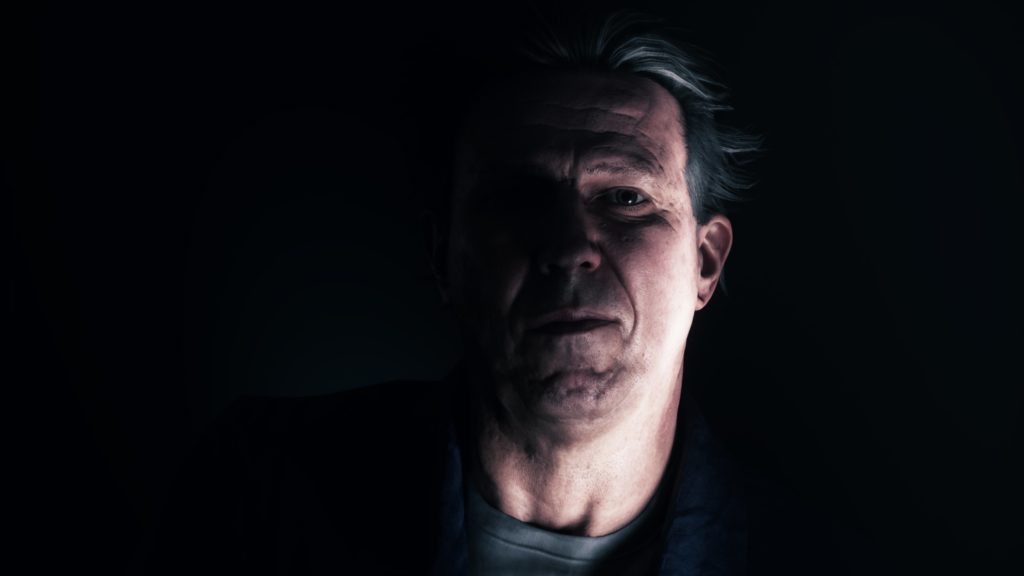
Control plays with that by making Ahti a major player in the story, someone with more to him than meets the eye. His weirdness strikes you immediately. The first time you visit him in his office, there’s a poster of him on the door standing with his mop. When you open the door, he’s in the same position, in the same lighting. Next time you visit, the poster is gone. He’s definitely the most “Twin Peaks” of the different characters you meet.
Speaking of which, Control wears its influences on its sleeve. The game pulls heavily not just from Twin Peaks but also from the SCP Wiki, The Lost Room, and the New Weird genre of fiction, which encompasses stories like House of Leaves and Annihilation. Even stories like the X-Files, Twilight Zone, and Ghostbusters have their places here, even if less directly.
We can see all of these at play here. The SCP Wiki, a collection of short stories about objects of power secured and contained by an arcane and secretive government agency, is the biggest influence, and its mark is visible everywhere. The Bureau acts exactly as the agency of the Wiki does, investigating and retrieving objects with supernatural powers. It then contains them and researches the objects, leaving the typical governmental trail of documentation full of redactions in the wake. In essence, weird is treated as mundane here. Weird is normal.
Weird is Normal, Normal is Absurd
We’re reminded of Twin Peaks as characters engage in mystical rituals as if it’s a given the rituals will help them solve the mystery at hand. It’s also in the game’s weirder characters who seem to live comfortably within the weirdness while still being normal themselves. We see House of Leaves in the shifting, impossible geometry of the Oldest House. Annihilation’s influence mostly seems to be the chromatic aberration that helps give the creatures we meet their other-worldly feel.
The sources that Control pulls from are among my very favorite things, and exactly the influences that I would pull from were I to write a story of my own. This game is virtually built for me, and I definitely enjoyed my time with it, but I also can’t overlook some of the ways the source material became a hindrance.
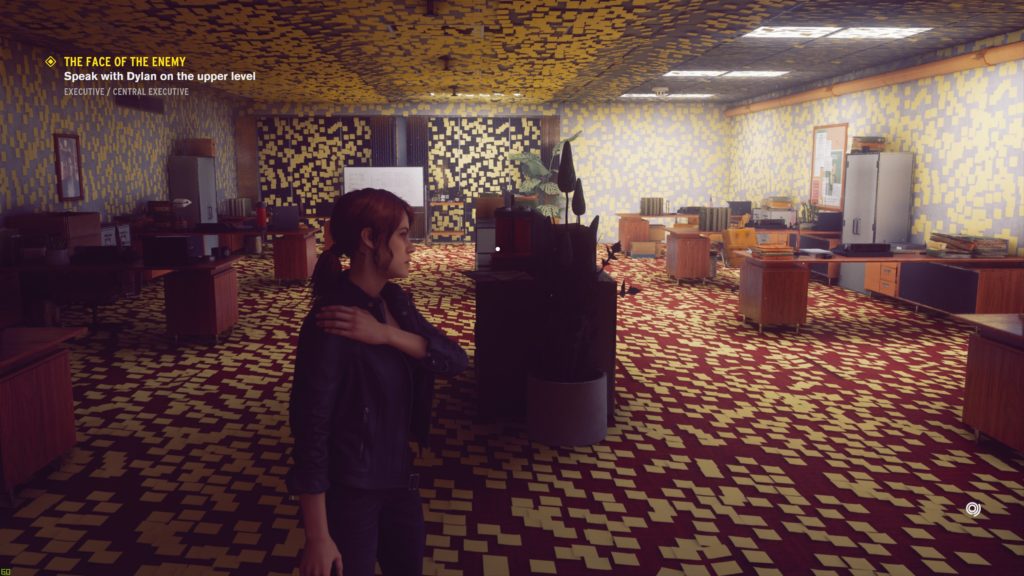
The thing about describing impossible things is that we’re left to imagine them and sit with them. We wonder what non-euclidean architecture looks like. We wonder at what could look so strange as to drive someone to madness. When that stuff is brought to life in such a way that we’re expected to interact with it and shoot at it, some of that mystery simply disappears.
The game’s biggest crime here is the dependence on humanoid enemies. You’ll fight guys with guns, guys with bigger guns, guys with bigger guns and armor. You’ll fight guys who fly and guys who explode. But they’re all guys. Humanoid forms that whisper and babble. They’re fun to fight. Of that, there’s no doubt. Remedy knows how to put together a fun combat arena. But Control depends heavily on gunfights and the targets you’re fighting aren’t that different from the woodsmen in Alan Wake or the time-manipulating soldiers in Quantum Break. For a game that’s about the unexplainable, these things are really easy to explain.
Not Weird Enough
On the one hand, this is a video game. Things have to be able to be rendered and interacted with. They have to have form and function. On the other hand, I feel like Remedy could’ve done better than just more guys with guns. Some enemies hint at it. One of the flying enemies is a twisted office worker on a rolling chair. The art makes that look a lot spookier than it sounds. Another is a glowing orb that zips around the map and acts as a buff to the other enemies. There’s also an enemy that turns invisible and then reappears with giant wings. But mostly, you fight guys with guns, and you’ll fight a lot of them. It’s only Remedy’s excellent combat design that keeps it from being tedious.
Another mistake Control makes is depending on finding documents; papers and audio/video logs force you to stand in place and watch them if you want to take in everything they have to say. They’re not required, but they do enrich the world. I had hoped the game would back away from this when previews showed how the previous director, Trench, communicates with Jesse. When he speaks, his silhouette appears overlayed over the screen like some David Lynch weirdness. It’s really cool, and it lets you keep moving while it happens. But more often, you’ll stand watching the bureau’s head researcher explain a concept. These moments stop the game in its tracks and remind us that, indeed, this is a video-game-ass video game.
But as a video game, all of this works really well.
It Is a Game
Exploring the wide-open map is fun, though sometimes a little more labyrinthine than I would have liked. While Control‘s story is linear, the game will have you going back and forth through areas, accessing new parts of them as you gain new abilities. Control is very much a Metroidvania, and Remedy has done a good job of making a place that I want to explore.
Throughout the Oldest House, enemies will appear, often from nowhere, or by possessing the unpossessed workers that hang suspended in mid-air above the proceedings. They flank and use cover, providing fun targets for Jesse to take down.
Jesse has two main ways to attack: with her Service Weapon, or with the powers she collects. The Service Weapons has five forms, any two of which you can have loaded up. At any time, you can go into the menu and swap one or both of them out. This balances the weaponry nicely. Instead of having five weapons to sort through at any given time, I only had the two to switch between; but I could swap them out if necessary, so I never felt limited.
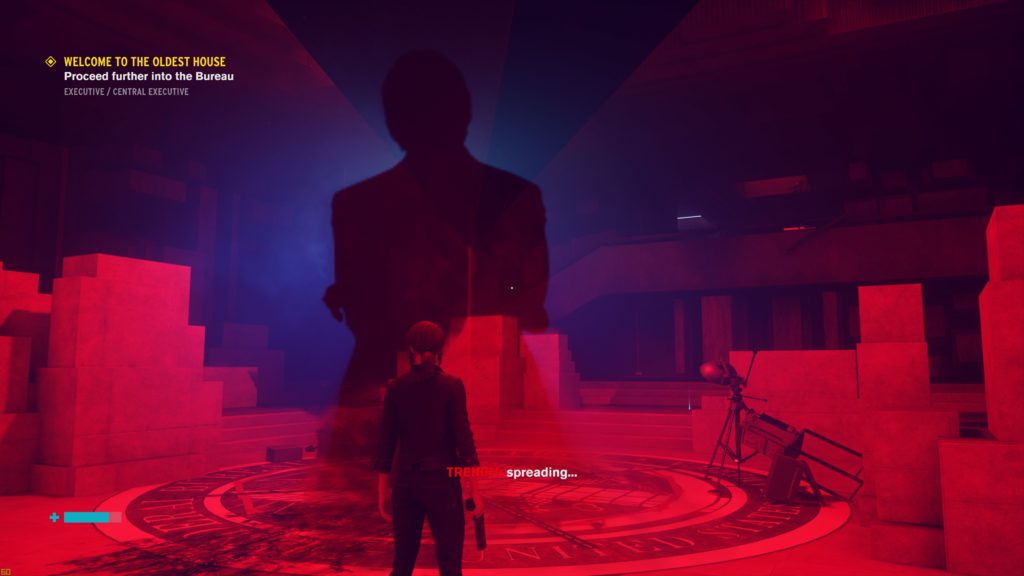
With her powers, Jesse can do things like hurl objects at enemies. Filing cabinets become weapons as she pulls them from the environment, propelling them forward at breakneck speeds. Eventually, Jesse can even pick up downed enemies and use them as projectiles. What’s more fun than throwing one dude at another dude? One smart decision Remedy made here is to give Jesse enough powers to offer some variety without ever making her go into a radial menu. There’s not a single radial menu in this game, y’all, and that makes controlling Jesse feel more natural. Bringing up a radial menu in battle feels like holding up my finger and saying “just wait a second” while I dig around in my backpack. It’s a hitch that slows gameplay down, and it just isn’t present here.
By the time I was making my way through the game’s final moments, I felt proficient and powerful with the different abilities. One ability often shown in the trailers has been the ability for Jesse to hover temporarily. This seems like the kind of thing that could easily be made overly powerful. The team at Remedy managed to find a spot right between “super jump” and “flying,” though, that made this into a genuinely fun ability to use.
The Sound in your Ears
Another part of the game that works really well is the sound design. I implore you to wear headphones while you play this game. Through speakers the sound is good. Through headphones, though, it’s excellent.
The enemy behind the Bureau’s lockdown is called the Hiss, but that doesn’t feel quite accurate; it’s more of a murmur. It’s always there, and the way it wormed into my head while I played was actually really cool. It made the whole experience more intimate.
One place it’s especially helpful is when taking on the Bureau’s various Objects of Power, mundane things that have taken on supernatural properties. For example, one optional mission has you chasing down a rubber ducky that won’t seem to stay put. Its quack is a simple, mundane sound, but the intimacy of the headphones made it unnerving the first time I heard it. A creepy quack. I love it.
Despite this, I didn’t feel like there were quite enough supernatural objects to chase down. This could make for some great DLC later on, but you’ll only end up chasing down about 10 items in the game proper. Some of them were very cool, but I still would have liked to have seen more of them.
Conclusion
Control is a Remedy game, for better or worse. It has tight and fun combat with some supernatural twists. It has references to almost all of the company’s past projects, even incorporating some into its own fiction. There’s at least one song by Poets of the Fall, a Finnish band that figured significantly into Max Payne and Alan Wake. And it doesn’t miss the winking reference to the fact that you’re playing a video game while one character looks directly at the camera. All of these are classic Remedy moves.
But it pushes the studio’s limits. They put together a great technical package here; environments change shape in real-time and have tons of destructible material. It runs very well on my GTX 1080 Ti, though my first time through showed heavy stuttering during a few cutscenes for some reason. It has some awesome post-processing effects, too, though it relies too much on blindingly bright light.
Control’s biggest letdown is that it’s too comfortable. Too much of it is about shooting guns at guys holding guns, or forcing the player to stand around listening to audio and video logs. By its very nature, the game should have found ways around all that.
Control is fun, though. The combat and sound design are stellar. The characters are engaging. I’d love to see another game about Jesse Faden. I loved the 20-ish hours I spent with it; I’ll almost certainly be diving back in again the same way I have with Alan Wake and Max Payne, but never did with Quantum Break. Control represents Remedy’s first outing since it broke from a 10-year exclusivity deal with Microsoft. If this is representative of what they’ll be able to do, we’re in good shape. But there’s still tremendous room to ramp up.
DISCLAIMER: We received a PC code from the publisher and completed the game and all side quests before writing this review. Neither the Control nor the Epic Game Store appear to track playtime at this time.
Fun Jug Media, LLC (operating TheNerdy.com) has affiliate partnerships with various companies. These do not at any time have any influence on the editorial content of The Nerdy. Fun Jug Media LLC may earn a commission from these links.
